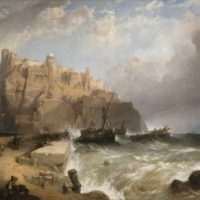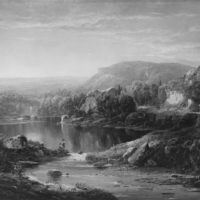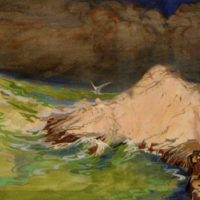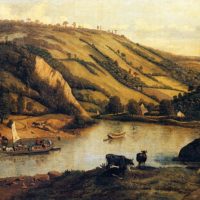The ostentatious display of killed animals after hunt had a representational and symbolic function. The motif of a dead animal hanging upside down – an actual hunting custom – had been taken over by 17th century Dutch painters from earlier artists such as Jacopo de’ Barbari and Lucas Cranach the Elder.
Paintings of Willem van Aelst
The picture depicts a still-life with peaches and grapes fallen from an over-turned basket, resting on a partly-draped marble ledge. The painting has been reduced from a vertical to horizontal format, resulting in the loss of the signature.
Willem van Aelst was a still-life specialist prized for his lovely flower and fruit pieces, and he has been mentioned as a sometime follower of Kalf. He also painted a number of elegant game pictures in a clear light. They show close views of dead prey – occasionally accompanied by killed poultry – that include scrupulously painted guns, hunting bags and horns, bells and other gear of the sport. As most trophy pieces they were designed as representative pictures of the sport, not records of the spoils of a specific hunt. In this picture the painter displayed the finely worked equipment of the huntsman on a marble ledge: a velvet hunting bag with chamois strap, trimmed with gold embroidery and fringes, and a tasseled horn. […]
In addition to fruit and flower still-lifes with cool colour harmonies, van Aelst also enjoyed painting elegant hunting weapons and dead animals placed in a dark corner by a wall for rich clients. One example is this still-life. A dead partridge is hanging by its leg from a piece of string. Its wings and feathers, which are grey with brownish patches, open up towards us at the bottom like a fan. The fly on the light-coloured feathers has an illusionist effect: disproportionately large in size, it belongs to the realistic level of the picture rather than its fictitious one, so that the viewer is given the impression that a real fly is crawling across the painting. The bird’s head has been pressed slightly towards the […]
- 1
- 2














